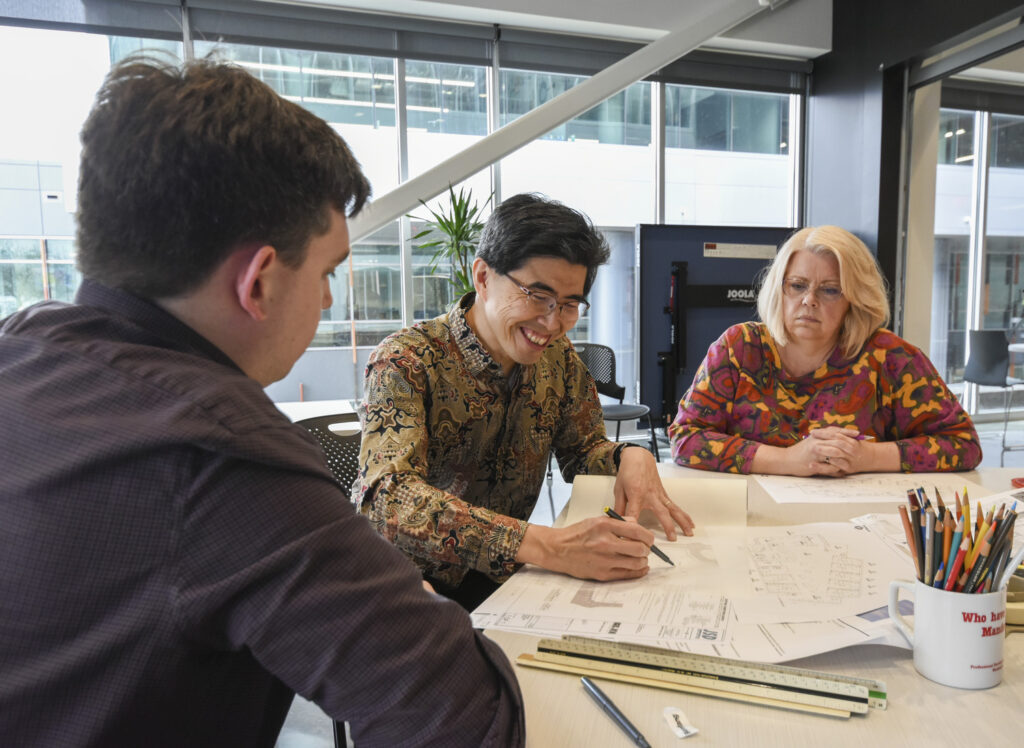
inspiring imagination
Strang architects, interior designers, and engineers stay abreast of the ever-evolving shifts in design, materials, code compliances, and environmental stewardship. In addition, they also key in on user experience (UX) considerations, safety and accessibility priorities, and project delivery, all of which advance at a dizzying pace.
In order to exceed expectations, our team anticipates, innovates, and then accelerates new solutions through an iterative process known as ideation. Ideation and its outcomes are the creative force of our entire team. These workshops energize forward thinking and provide inventive solutions to our clients and industry problems.
Within This Constantly Evolving Sphere, Simply “Keeping Up” Is Not Enough.
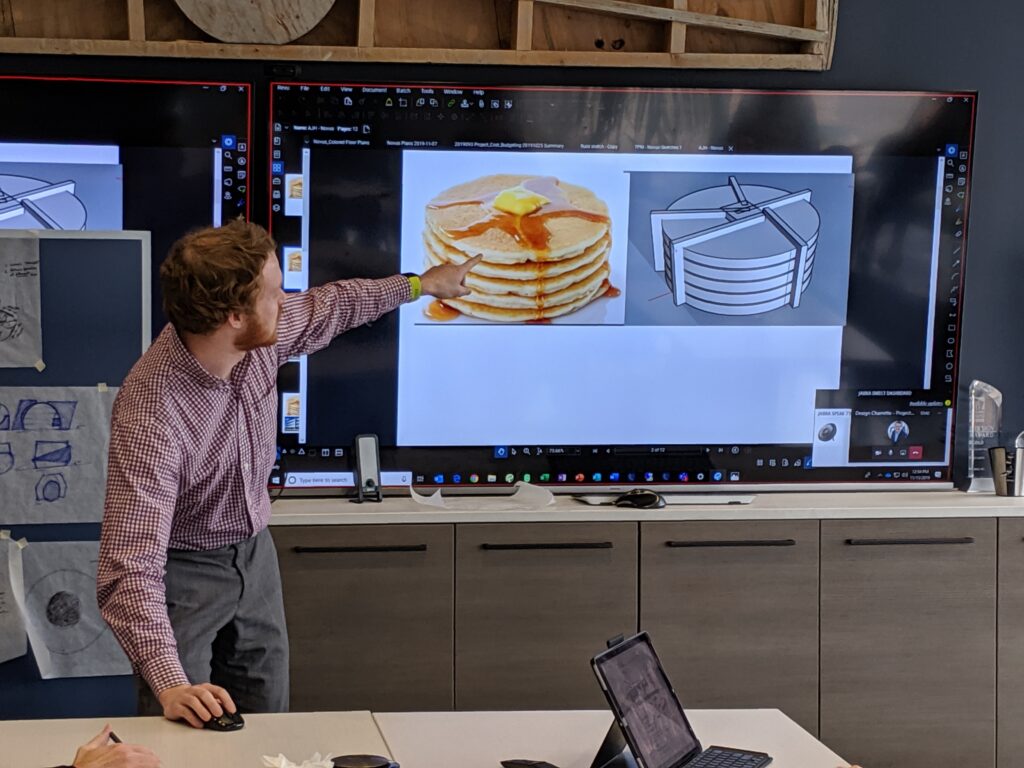
Ideas can come from anywhere! Alec Hembree shares at a charrette for a confidential headquarters project.
Engagement
At its core, ideation is the process of generating, developing, and communicating new, even abstract ideas. It’s where we transition from quantifying a problem to creating a solution. Inline with Strang’s multidisciplinary approach, ideation sessions bring together architecture, interior design, and engineering to tackle challenges from all angles.
We continually hone our ideation protocol entitled, “Design Synchronicity”. Here, architects, engineers, and interior designers not only master their respective disciplines through ideation, additionally, they focus on precisely how disciplines become fully integrated within the built environment. Integration is viewed from the standpoint of project resourcefulness plus economic and performance compatibility. In other words, a fully synchronized building across the AEI and building owner spectrum.


The value of the ideation process is not only beneficial for the design field; for decades, companies such as Disney, Alcoa, IBM, Hewlett-Packard, Boeing, and many more have developed platforms and processes for cultivating and harnessing new ways of thinking and enhancing existing company standards. Like Strang, these organizations sincerely value innovation and continual process / product improvements.
Think Tanks and Idea Labs Continue to Encourage Environments for Ideation Exploration.
Know this, the real strength of ideation lies in its potential to break teams out of their comfort zones and conventional ways of thinking. No standard operating procedures here. By its very nature, ideation encourages diverse perspectives, fostering an environment where no idea is too far-fetched or unconventional. Through ideation, Strang’s architects, interior designers, and engineers have the freedom to explore new possibilities, redefine problems, and challenge assumptions, whether it be environmentally friendly building designs, a smart office space, or an AI-enhanced living environment.
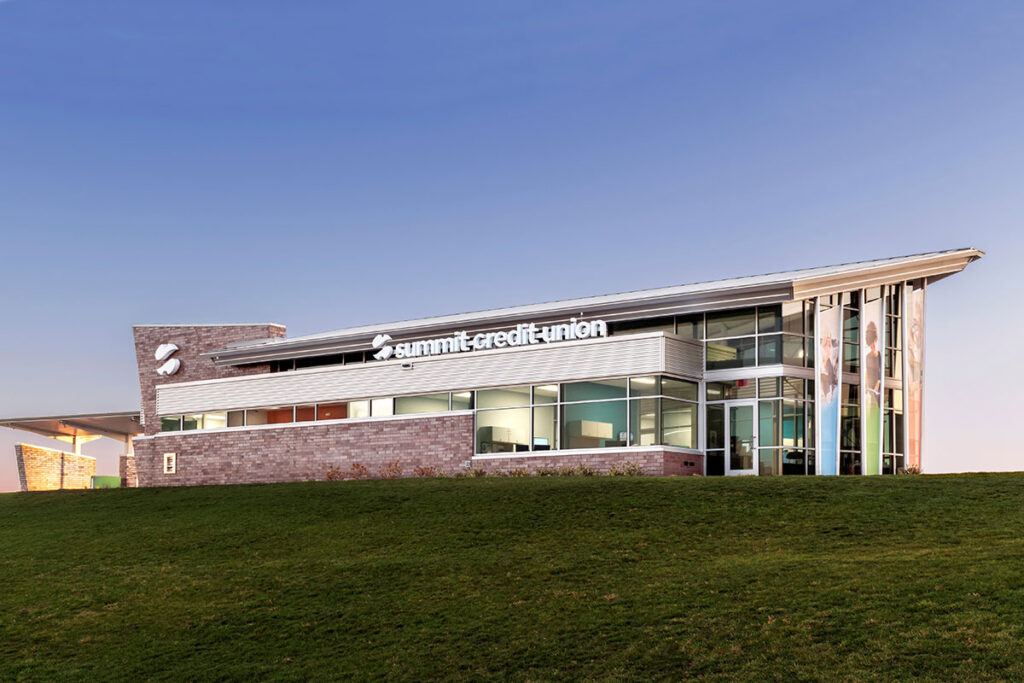
Summit Credit Union Mt. Horeb branch (top) and associated early ideas from our design charrettes leading to the final building design (bottom).
Our Perspective and Procedure
Ideation is an integral part of our DNA. We believe that innovative solutions emerge when different disciplines intertwine, and our team is encouraged to share ideas and collaborate across fields.
Our ideation process encompasses comprehensive brainstorming sessions, charrettes, and collaborative workshops, all underpinned by iterative development. The goal is to cultivate a culture of innovation and creativity. While it may appear to be unstructured brainstorming, our approach is supported by specific meeting guides, timed sessions, and organized discussion topics.
We Believe That No One Has An “Exclusive” On Critical, Creative Thinking. Great Ideas and Solutions Come from Everyone.
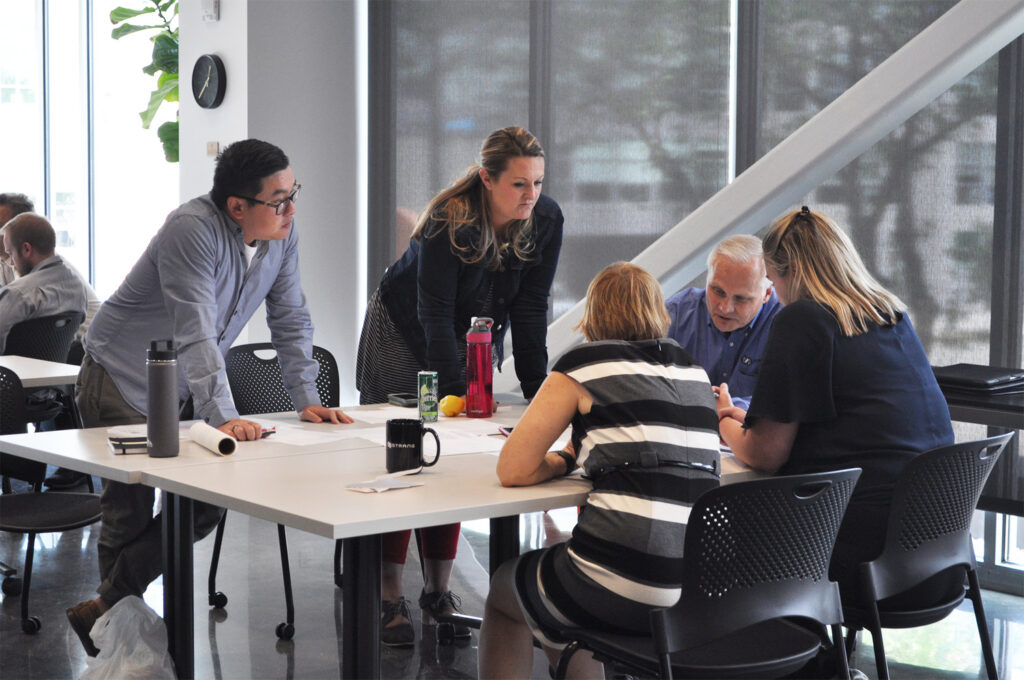
Industry trends and new technology are common ideation exploration projects, as such we have begun incorporating emerging technologies such as artificial intelligence (AI) into our discussions. AI and machine learning are making a significant impact on the design industry, from generative design tools that provide countless design options to predictive models for efficient building maintenance progress.
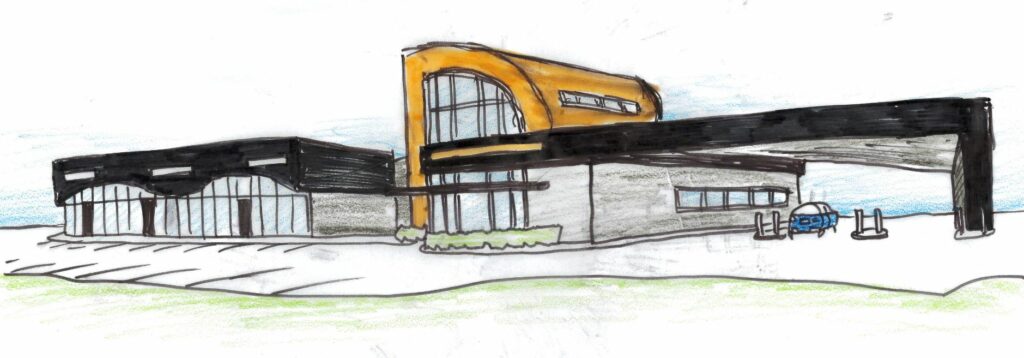

Example Design Concepts for a Bank of Sun Prairie Location.
Charrettes and Ideation Sessions are High ROI, the team’s research and “Useful Data” continuously aid in design solutions.
We are always exploring ways to harness these technologies to create designs that are not only aesthetically pleasing but also sustainable, efficient, and responsive to human needs. Take, for instance, the concept of ‘smart buildings’. Our team works with clients to create smart systems that automate building performance by optimizing energy use, improving occupant comfort, safety, and productivity, and predicting maintenance needs. Potential solutions to like these can be addressed early on in the ideation process.

In conclusion, ideation is more than just a process; it’s a mindset. It’s about embracing the possibilities of the new and unknown, fostering a culture of innovative change, and leveraging our multidisciplinary expertise to create designs that inspire, excite, and transform. As we continue to navigate the rapidly evolving landscapes of architecture, interior design, and engineering, our commitment to ideation remains at the forefront, driving us to create a future where design meets possibility.
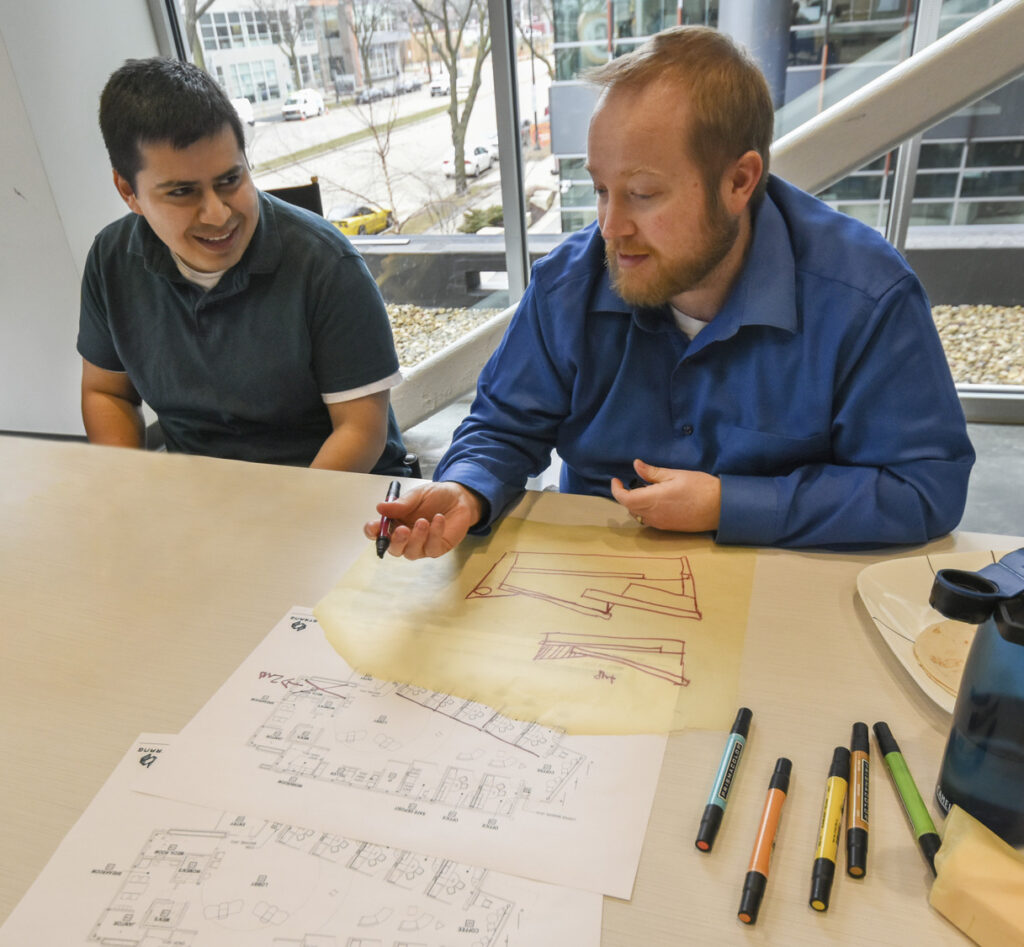
Your thoughts and discussion on how your teams can implement ideation are certainly welcome. We challenge you to get out of your comfort zone, your own ideations are closer than you think.











